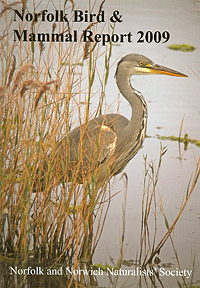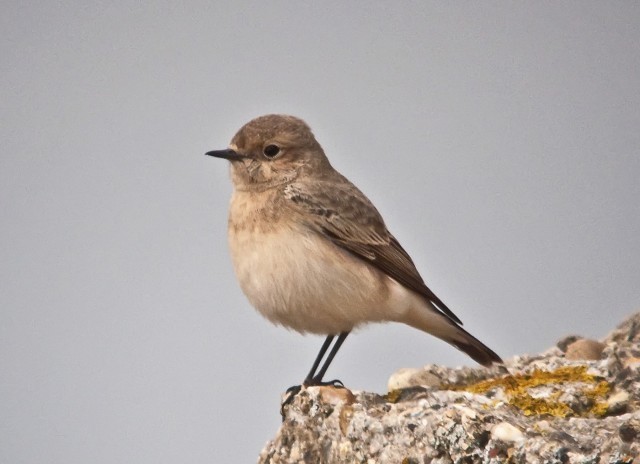Norfolk Bird & Mammal Report 2009

The hefty package that dropped through the letterbox the other day held great promise, as I was expecting my review copy of the Norfolk Bird & Mammal Report for 2009. The nation's premier birding county is a veritable mecca for birders from across the country, so big things are always expected of the report.
Published by the Norfolk & Norwich Naturalists' Society (N&NNS), the report certainly delivers and is a comprehensive summary of the year, with plenty of background information to while away many an evening. The individual articles make good reading, pitched at various levels for the widely differing readership. There is a real focus on 'forms' as well, with articles looking at the occurrence of 'Greenland' Common Redpoll, Icelandic Redwing and eastern Lesser Whitethroat, although the lack of promised sketches with the latter was unfortunate. Adding to this are documentation of the first modern breeding records of Red Kite — and a summary of the last historical record — and a summary of the origins of Great Yarmouth's Mediterranean Gulls.
It's easy to just focus on the birds, but the mammal report is also a cracking read. It is as complete as any I've seen, and includes maps and details accounts of most species. The account of the county's second record of Sowerby's Beaked Whale is an exciting read, but perhaps the less said about the photo of the straight-sided penis of a Whiskered Bat the better.
As a survey kind of person, a good measure of a bird report for me is the coverage of common species. Admittedly some counties can only work with the few records they have, but with so many birders, surely Norfolk doesn't suffer the same problem? Most common birds are well represented, with roost counts for all of the corvids and details of passage birds, but also some details of breeding. Although the only breeding count of Jackdaws was of four pairs at one site, details of the Breeding Bird Survey trend are also given.
Within the report there's a mix of the good, the bad and the ugly. 'The good' that really stood out for me was the continued increase in the number of Marsh Harriers now roosting at Hickling, with up to 85 recorded during the year. If you've never visited Stubb Mill then certainly chalk it in your diary for this winter. 'The bad' included the sad fact that there were no autumn records of Wood Warbler, perhaps for the first time ever. Add to that that Willow Tit is now a description species in the county and this is a sorry tale of declines.
There really isn't any ugly, but as ever, there are always minor niggles with such a wide-ranging publication as this, but none of these detract from its appeal. One of the most frustrating aspects of the report is the species order used in the systematic list of birds. Although the editorial, penned by Andy Stoddart, makes mention of the new order and explains its adoption, it does make the report difficult to use as a reference. When I needed to flick to Long-tailed Tit, I was left thumbing the pages for an age before finding them — at the start of the warblers — and the splitting up of the trio of Wren, Dunnock, Robin may also frustrate. Interestingly, though, the ringing report, a section I obviously always flick to after the photos, remains in the more expected species order. The naming seems excessive for some species as well, a prime example being:
BLACK-HEADED GULL (Common Black-headed Gull) Chroicocephalus ridibundus ridibundus
The only other thing that sticks out is the inclusion of a photo of a Pied Wheatear that doesn't then appear in the systematic list. It was presumably either never submitted, never accepted (despite looking like one) or simply overlooked by the editors.

Pied Wheatear, Horsey, Norfolk (Photo: Tim Corke)
But as I said, none of these minor gripes detract from what is an excellent publication from a society well worth supporting. Copies of the report are available via the N&NNS website at £12 including P&P.


